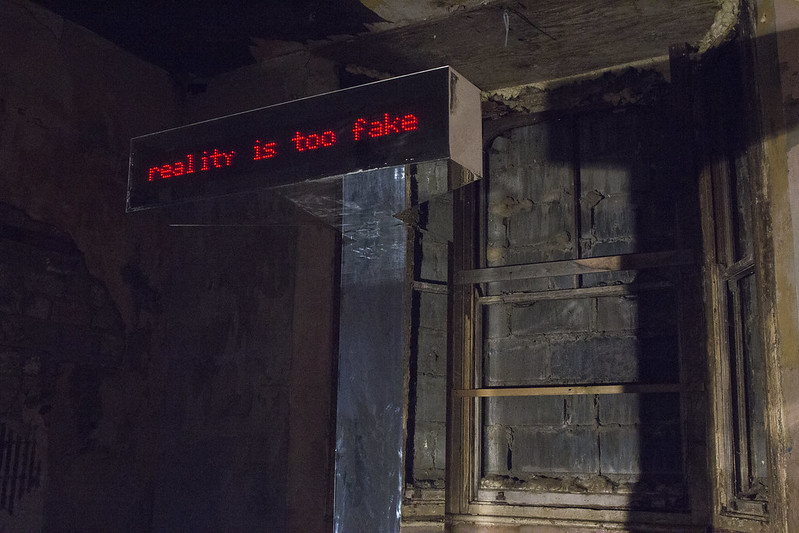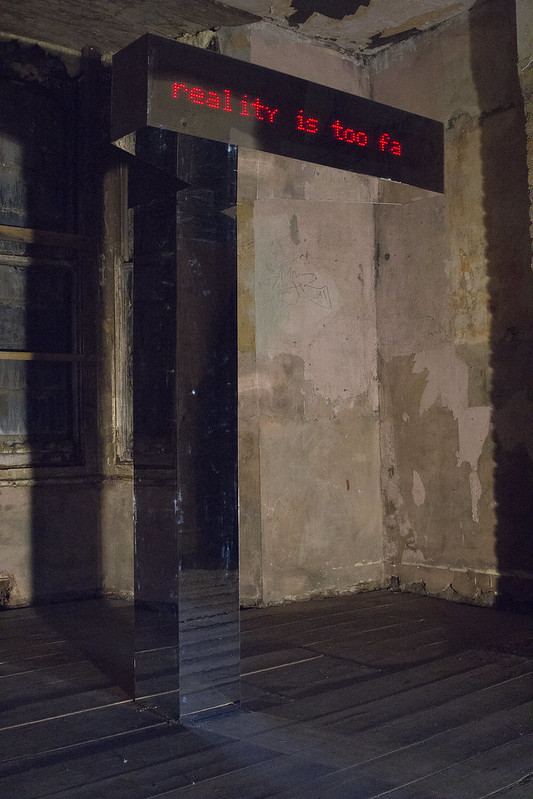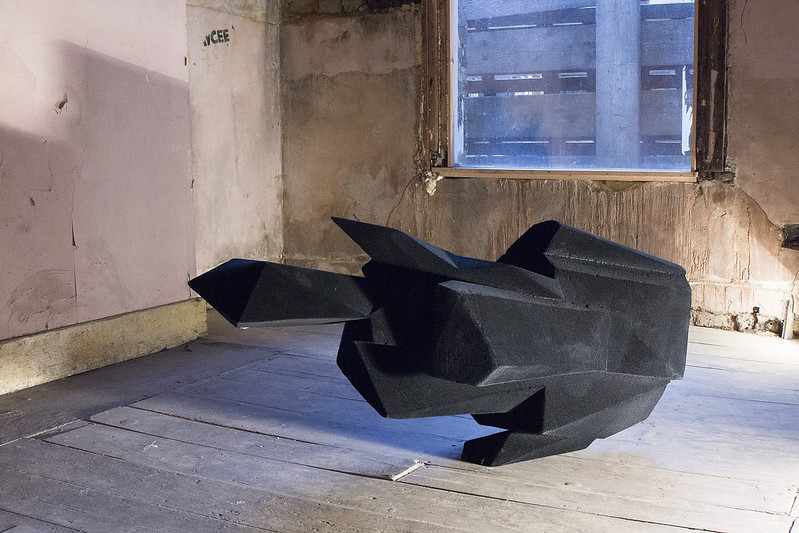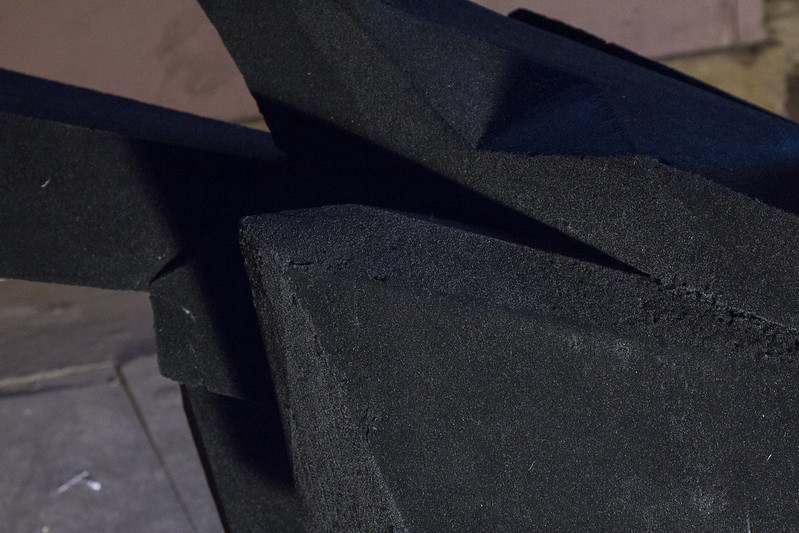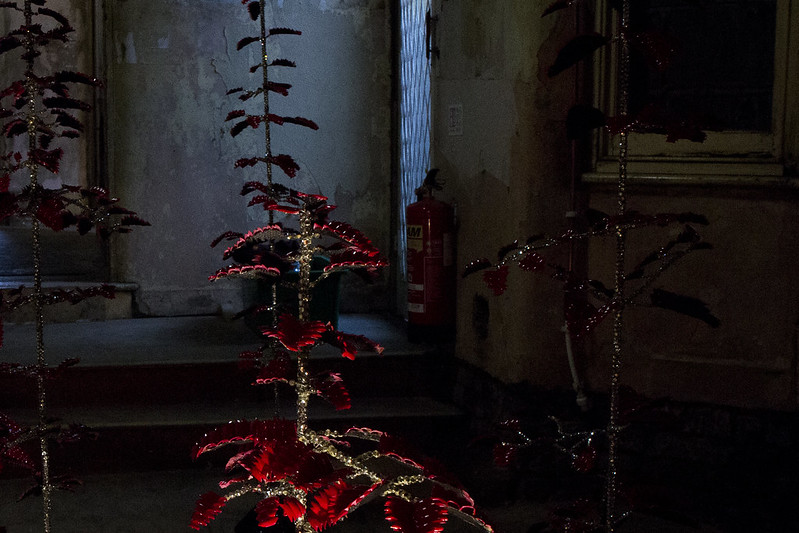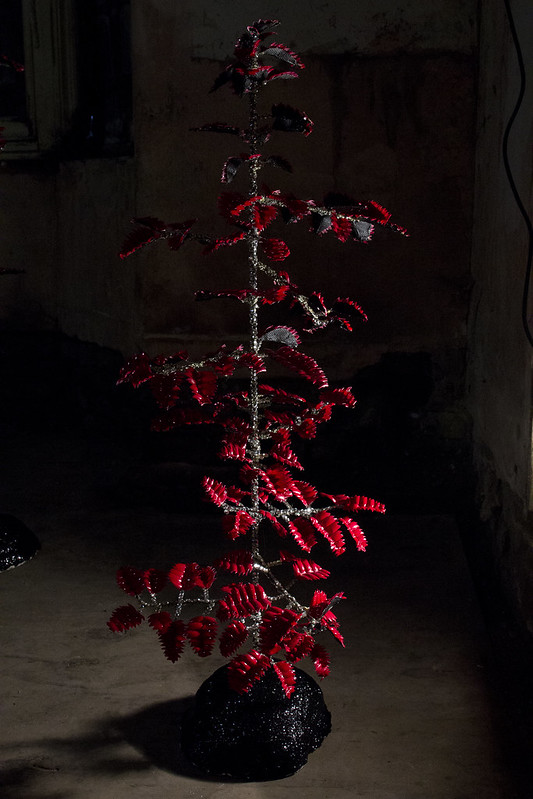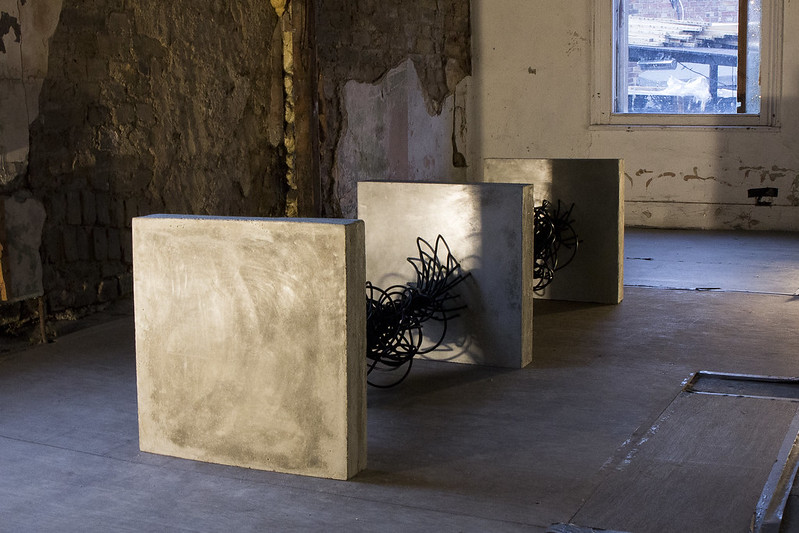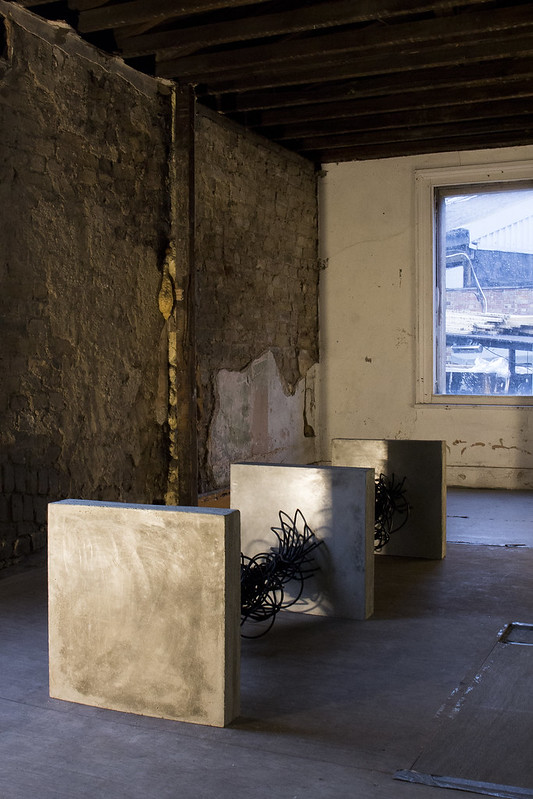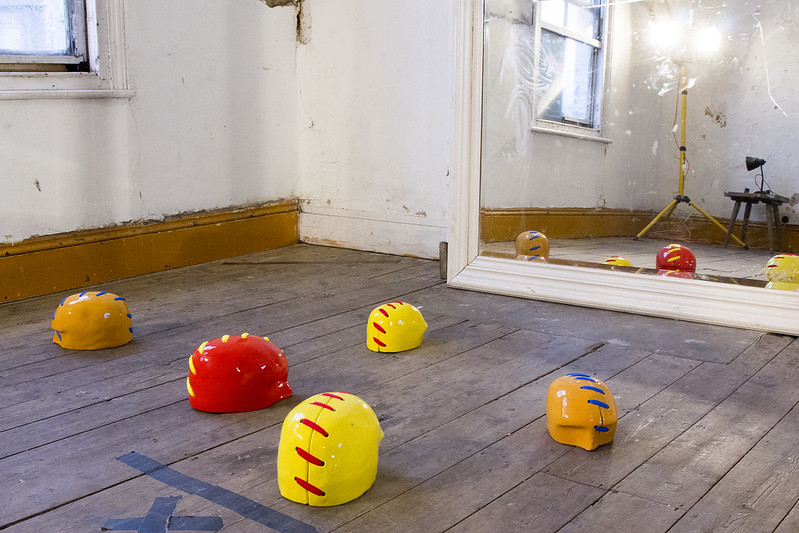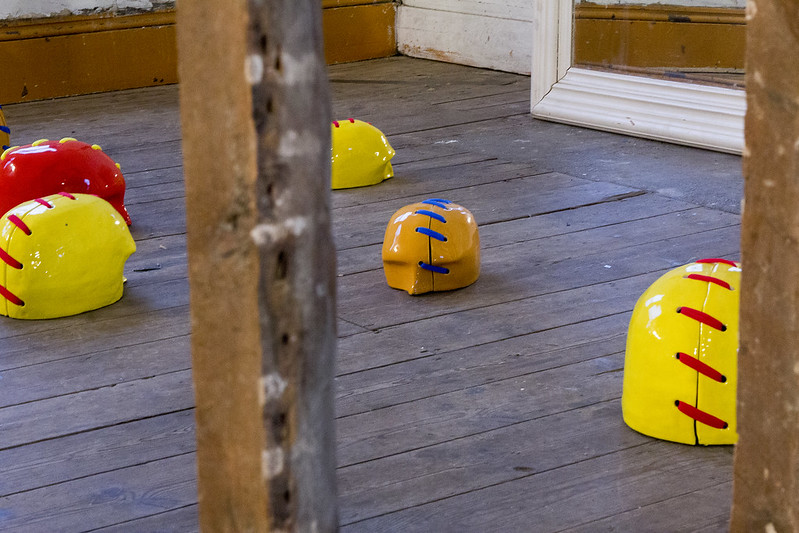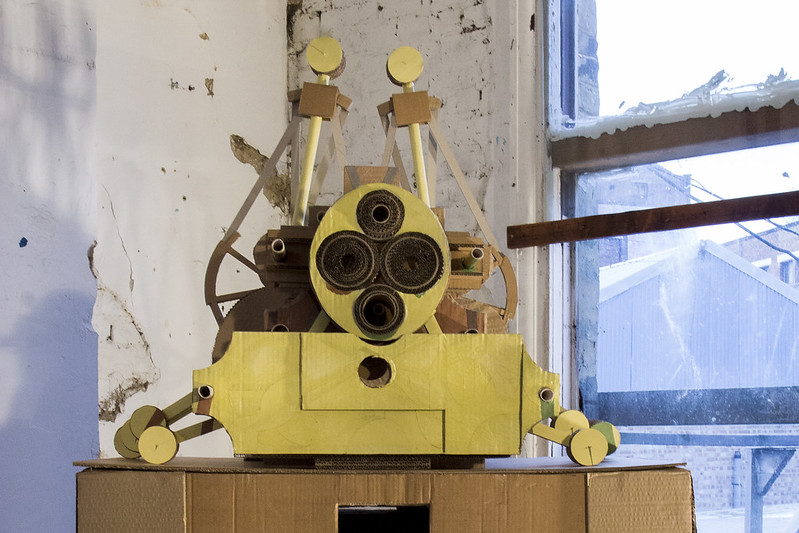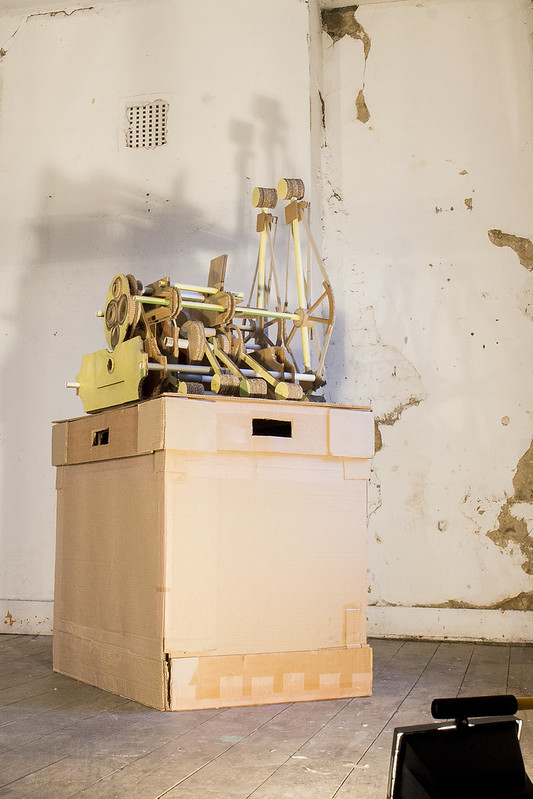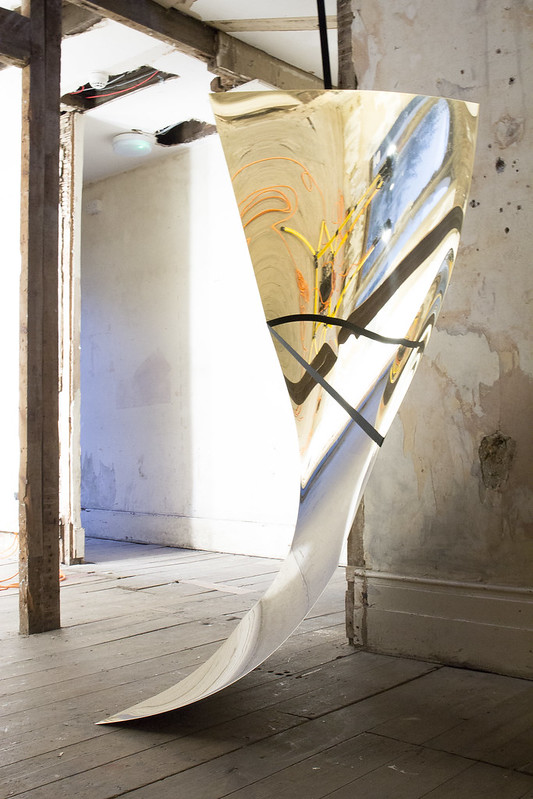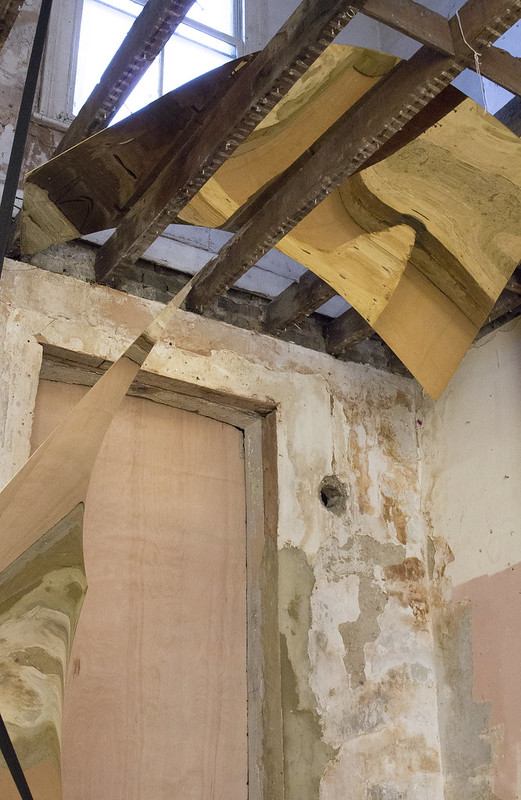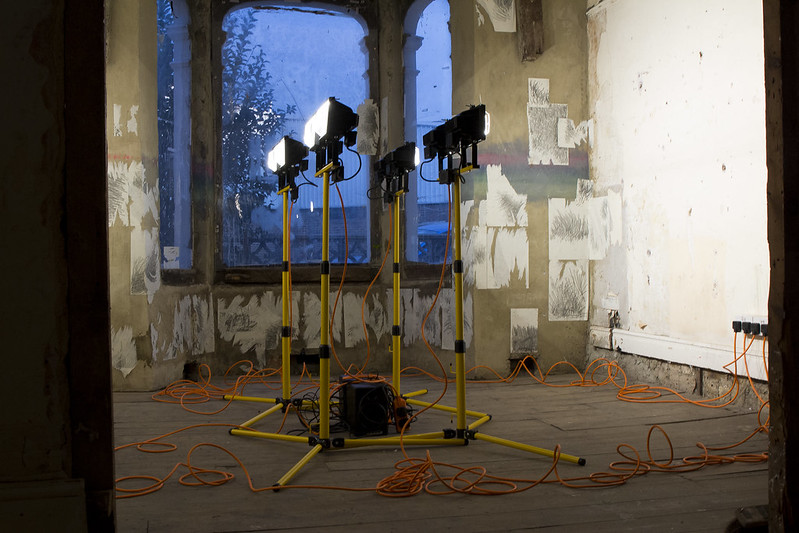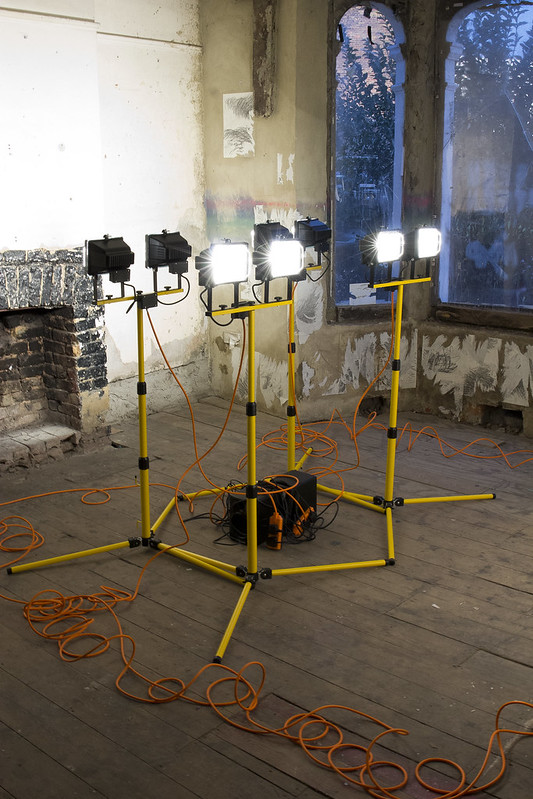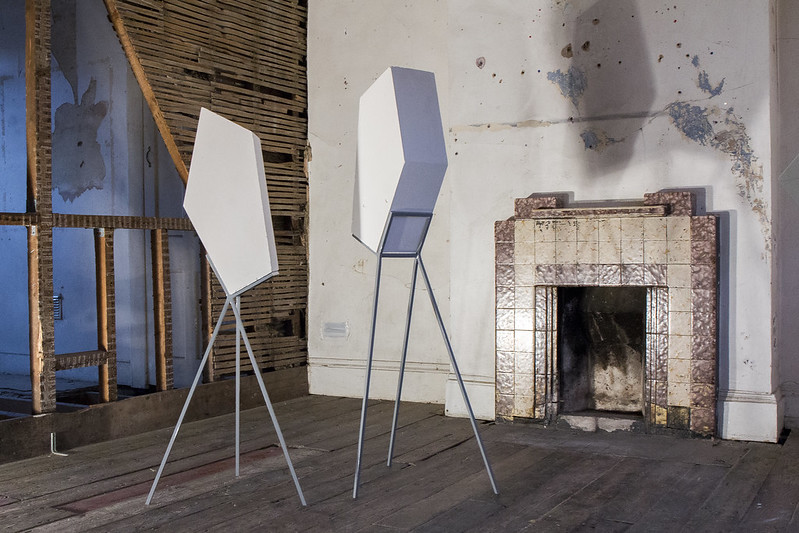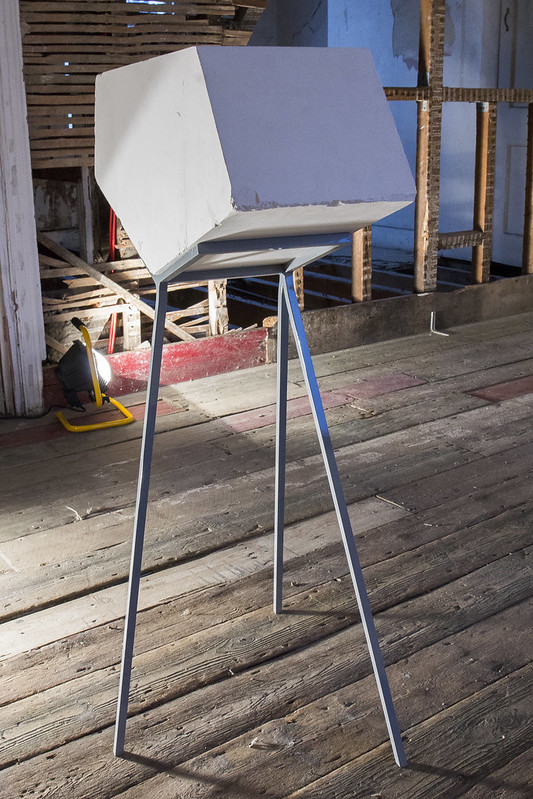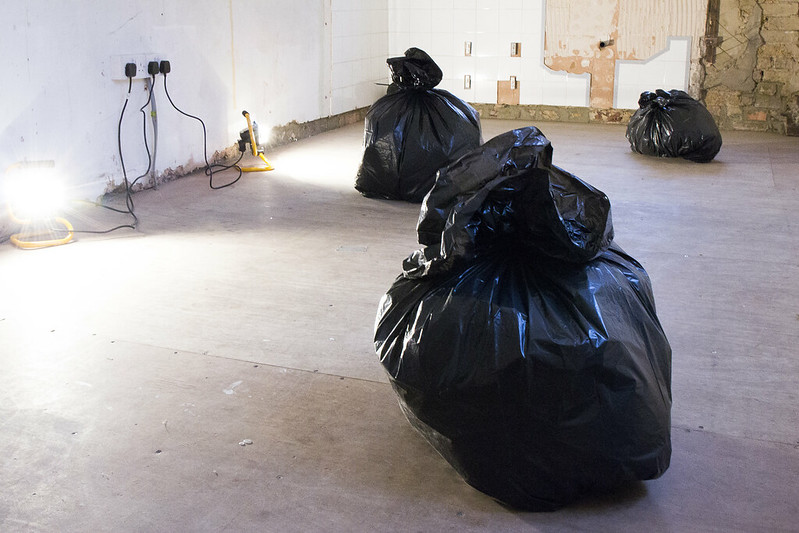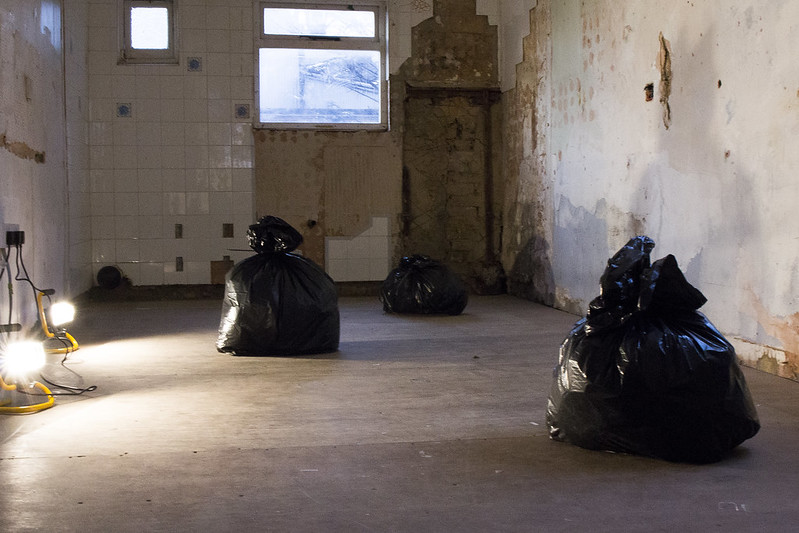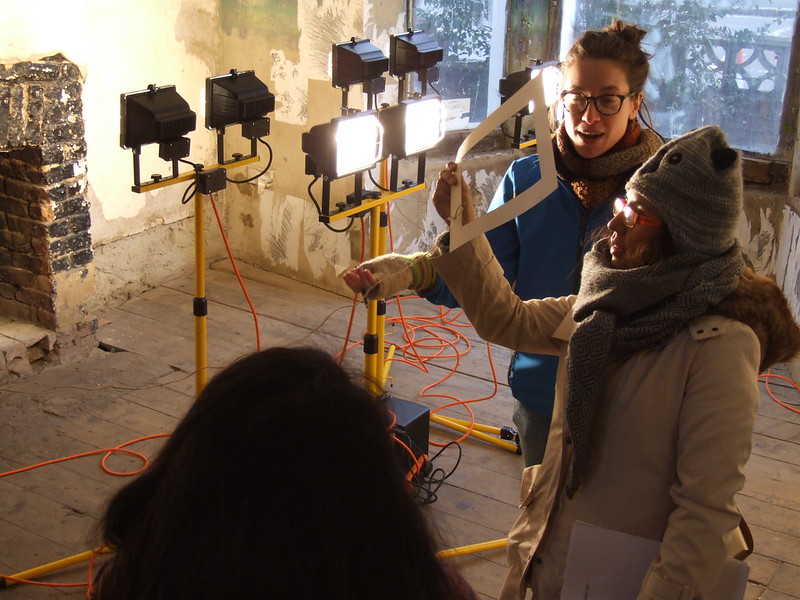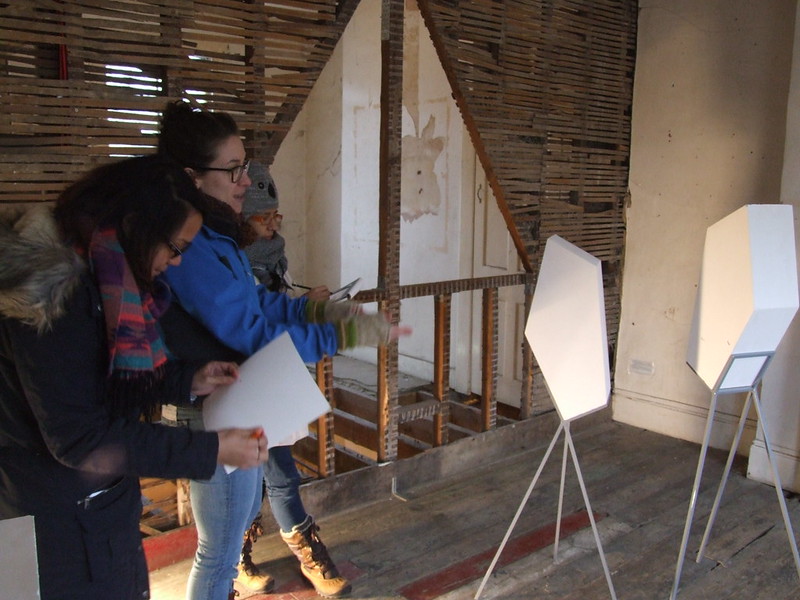Text by Giovanna Violi.
In a brisk sunny London afternoon I make my way in front of a seemingly abandoned house. I have been invited to a private view of 'POMP', a new temporary exhibition born from a collaboration between the Simon Poole's art company, Osterly, and Social Artist, Timothy Holt. "It cannot be," I tell myself looking at the decrepit construction in front of me, wondering if I have yet again fallen victim of my bad sense of direction. "An art exhibition here?" My bewilderment, stemming from numerous visits to white-cube-type galleries and grand museums, is dissipated by the figure of Mr. Poole now standing on the front step and inviting me to start exploring the show. I am therefore led into a dark corridor and suddenly have the sensation of having entered the virtual reality of one of those video games in which the player roams a desolated planet earth, fallen victim to a disease outbreak of sort, trying to survive and save the few human beings left. However, I am quickly brought back to reality, or perhaps transported to another world entirely, by the sight of extraordinary art works standing out from the skeleton of the forsaken building.
The first piece I lay my eyes on is a T-shaped structure whose mirroring surface reflects my image back to me as I stand right in front of it. The words "reality is too fake" scroll down the LED sign assembled in Graham Clemie’s 'Existentialism II' and its upper portion. Ironically, a brief conversation with the artist himself unveils that the quote comes from a documentary about video game addiction (which I later find out to be Web Junkie by filmmakers Shosh Shlam and Hilla Medalia). While my mind lingers among the implications of these counterintuitive words and of the significance of my reflection, as well as Mr. Poole’s, in the piece, I notice another work of art placed right behind us on the floor of the next room.
